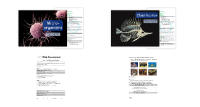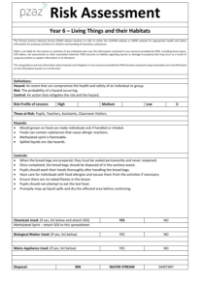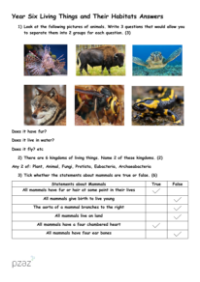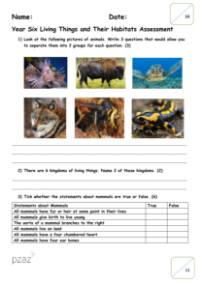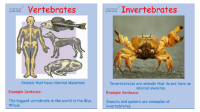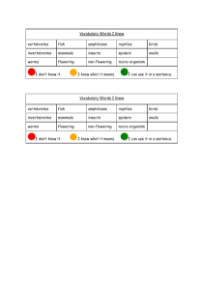Living Things and their Habitats - Knowledge Organisers

Science Resource Description
The Year 6 science topic "Living Things and Their Habitats" delves into the intricate world of living organisms and their classification. Building on the foundation laid in Year 5, this unit prepares students for more advanced biology concepts in Key Stage 3. Key vocabulary such as 'taxonomy', 'classification', and 'microorganism' are defined and contextualised. Students learn to distinguish between living things using various features, which is a crucial part of the curriculum. They explore the fundamental differences between vertebrates, animals with backbones, and invertebrates, which lack backbones. Vertebrates are further categorised into five groups: fish, amphibians, reptiles, birds, and mammals, each with distinct characteristics like breathing mechanisms, egg-laying habits, and body temperature regulation. Invertebrates are grouped into insects, arachnids, and molluscs, identified by features like body sections and number of legs.
When it comes to microorganisms, students learn that these are the smallest living organisms on Earth and include entities like algae, fungi, protozoa, bacteria, and viruses. The curriculum emphasises the diverse roles microorganisms play, from photosynthesis to waste decomposition and causing infections. The unit also highlights the contributions of Carl Linnaeus, a seminal figure in taxonomy, who developed a systematic approach to classifying animals. To reinforce learning, the unit recommends at least two experiments, with one culminating in a written report that applies scientific enquiry skills. Additionally, students are encouraged to compare animals from various habitats and design investigations such as bug hunts. The knowledge organiser also presents questions to evaluate students' understanding at the beginning and end of the unit, covering topics like the characteristics of microorganisms, the classification of animals and plants, and the spread of illnesses.

